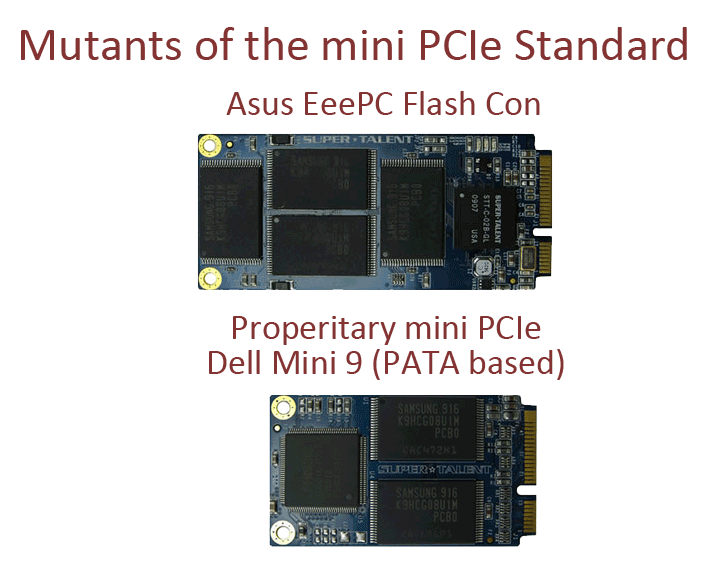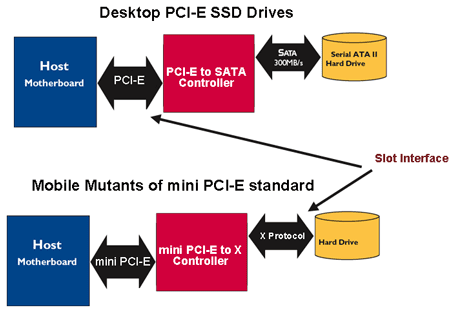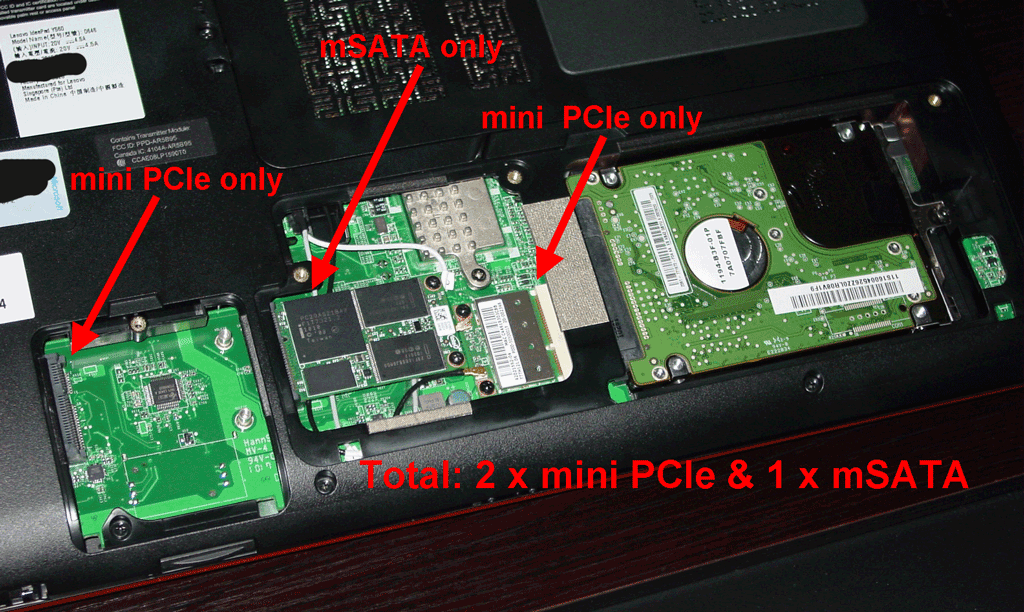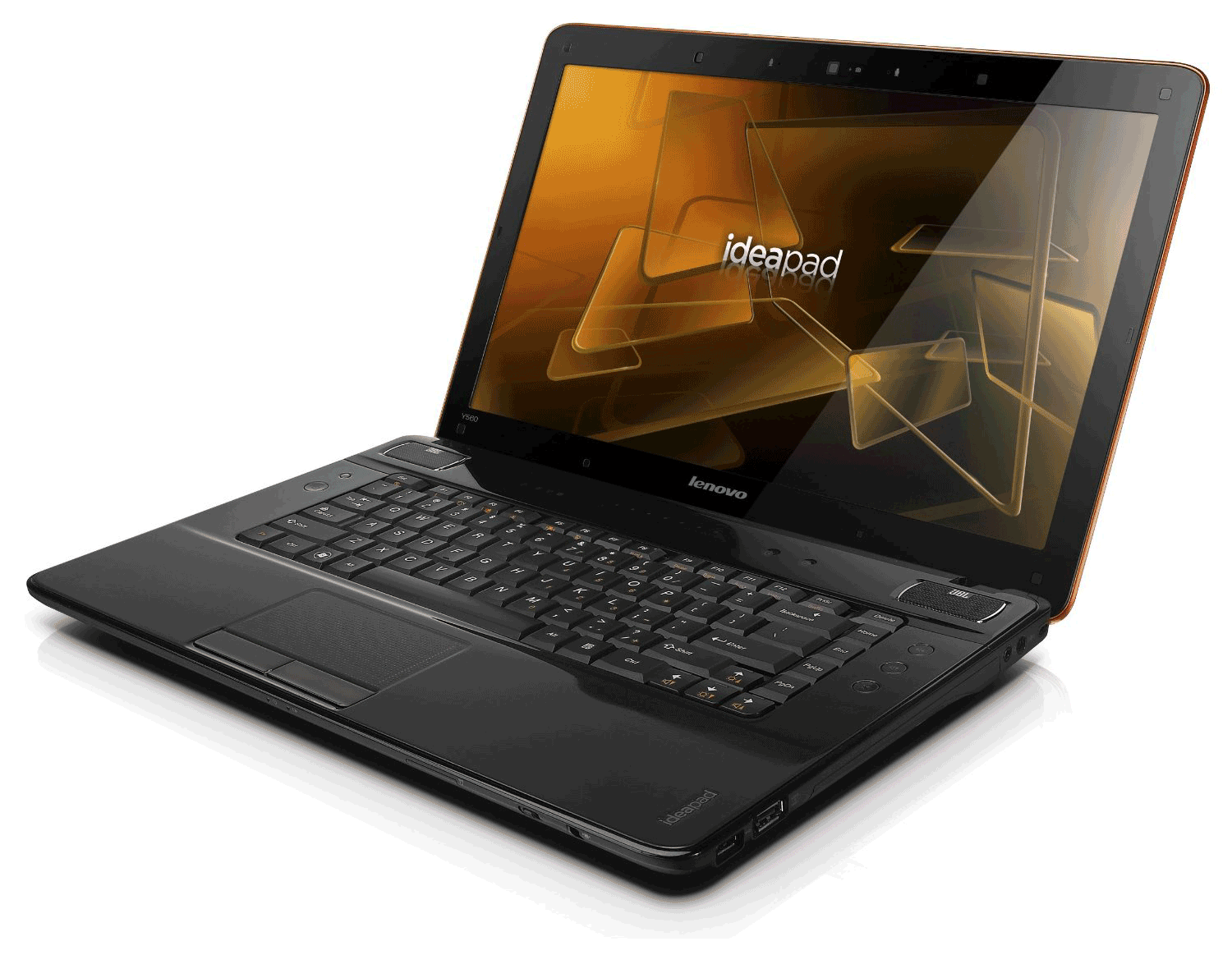mSATA: Completely New
Wait. Haven't we seen drives like the SSD 310 before? No, mSATA is completely different from the flash-based devices loosely based on the mini PCI Express standard seen previously.
Why is this important? Frankly, the mini PCI Express standard has been modified one too many times. The standard basically went out the door as one company after another modified it to suit their purposes.
First we had Asus with "Flash Con," which was a proprietary version of mini PCI Express used in its Eee PC as a connector for a supplemental hard drive. These used a pin-out design specific to only Asus Eee PCs and had a non-standard height (71 mm), so it wouldn't fit into any other notebook, even if you tried.
Then we had the notebooks like the Dell Mini 9, which also used a modified version of the mini PCI Express standard that brought PATA signals to the same edge connector, so you could use a PATA-based SSD that also had the same form factor specified by the original mini PCI Express standard (51 mm x 30 mm).
The variations on the standard are why you can't install existing "mini SSDs" into just any old mini PCI Express slot. Think of OCZ's RevoDrive X2 that runs off a standard x4 PCIe slot. You can drop this in any desktop because all motherboards employ the PCIe standard at the slot level. For notebooks, we have mutants, and I'm not talking about the save-the-world-types. Proprietary variations use a bridge chip before the PCB traces reach the slot. The slot, while it has the same pin count and form factor, is completely incompatible with the specified mini PCI Express standard.
Now, you can't drop mSATA-based devices like Intel's SSD into any current notebook with mini PCI Express either, as they require specific mSATA slots. Fortunately, future mSATA-based SSD drives won't be compatibility limited, and we think it takes a company like Intel to make a technology like this standard-enough for other vendors to start backing.
Notebooks with mSATA, like Lenovo's IdeaPad Y560, are already shipping. More are expected to pop up shortly, and we are told the technology should become a standard option on many of the mobile platforms that roll out later this quarter.
Get Tom's Hardware's best news and in-depth reviews, straight to your inbox.
Current page: mSATA: Completely New
Prev Page Meet Intel's SSD 310: Like X25-V, Only Smaller Next Page Test Setup-
Annisman Great article!Reply
Been rocking an SSD for about a year now, and there is no going back to mechanical drives, SSD for the laptop segment makes even more sense. I think most of us however would like to see price drops a bit faster though, my 120GB OCZ Vertex Turbo cost me over 500 dollars. -
acku Reply9509117 said:Great article!
Been rocking an SSD for about a year now, and there is no going back to mechanical drives, SSD for the laptop segment makes even more sense. I think most of us however would like to see price drops a bit faster though, my 120GB OCZ Vertex Turbo cost me over 500 dollars.
I believe the last report I read mentioned close to 60% of all SSD purchases are mobile related. SSDs can really mark up a notebook's price, so I'm right there with you on prices. We need price drops, more of them, and in quicker succession.
Cheers,
Andrew Ku
TomsHardware.com -
alyoshka It's high time they came up with the ROM or CMOS chip that has the capacity to just store the OS on it and a few other programs, that itself will make the system really very fast..... then they could go over for a change to the 6GBps SATA drives and make them work at that speed..... Really, we already have ample RAM and expandable slots for them, why not get a little more creative and just get the job done instead of going all the way round and trying this approach.Reply
We have fast, extremely fast drives but at prices that touch the sky, wouldn't it be better to just have loaded or embedded the OS straight onto the mobo.... cheaper until it's capable of handling the high data flow rates offered by SSD... yet not being able to saturate the SATA flow rates or capacities..... -
amk09 Newegg Daily Shell Shocker has a 128GB Kingston SSD on sale for $119.99!!!!!!!!!!!!!!!!!!!!!!!!!!!!!!!!!!!!!Reply
History has been made. SSD's are finally starting to hit a dollar/GB. Keep those prices dropping! -
druids84 Although I of course would enjoy having 120+GB SSD on my laptop or home desktop, only true photo/video professionals or gamers with ample games need that much fast storage! I am able to squeeze Win7 and several Valve games within my old 30GB OCZ Vertex SSD, and I would feel quite comfortably with having 64GB SSD just to have more breathing space. You do NOT need more than that unless you're processing a lot of photos/videos. 120+GB is only if you include movies and music. You don't need 20,000 IOPs or 250MB/s seq.reads for your movies and other sitting junk! ;) Just buy a cheap external 2.5" HDD and store all your movies/music/photos on that, and this solution is quite mobile if you drag your laptop everywhere!Reply -
Travis Beane druids84Although I of course would enjoy having 120+GB SSD on my laptop or home desktop, only true photo/video professionals or gamers with ample games need that much fast storage! I am able to squeeze Win7 and several Valve games within my old 30GB OCZ Vertex SSD, and I would feel quite comfortably with having 64GB SSD just to have more breathing space. You do NOT need more than that unless you're processing a lot of photos/videos. 120+GB is only if you include movies and music. You don't need 20,000 IOPs or 250MB/s seq.reads for your movies and other sitting junk! Just buy a cheap external 2.5" HDD and store all your movies/music/photos on that, and this solution is quite mobile if you drag your laptop everywhere!My Steam folder alone is 437GB. I have another 100GB+ on non steam games also. Then add my OS and etc.Reply
I currently enjoy the faster speeds of 4x500 RAID 0 with the OS on a 1TB. I would actually be running 8x500GB RAID 0 if my case was large enough, and my graphics card weren't so large (blocks 2 slots).
How does Toms feel about doing a showdown between $500 of modern HDD vs $500 of modern SSD? With and without a dedicated controller.
I know for my next build I don't know whether I want 4x 3TB or a 3TB with 2-3x SSD or 3x 3TB with a single small SSD, or is it better to go with, say, 8x 1TB or 4x 3TB in either RAID 0, 10, 5, 6, 50, 60 etc. :) -
druids84 Well, just as I mentioned earlier, my point still holds: you DON'T need more than 120+GB unless you're serious gamer or professional working in multimedia business. And your setup sounds a bit like "gamer with ample games" case from my argument. ;) I really can't see a way I could squeeze 4x RAID in ordinary non-gaming laptop, which is what many if not most of people use for actually doing their work.Reply
So, if I would have to choose between old-school 500GB HDD, overkill 256GB SSD, or just simple 60-128GB SSD + external 2.5" HDD for a laptop, I'd go with the last one. -
romulous75 meh, when I added an SSD drive I did not notice much improvement. I have a raid 5 array of WD2003FYYS drives which use to be the boot drive ;)Reply -
romulous75 oh, and also I seem to be the first one loaded in COD black ops when it changes levels :)Reply



